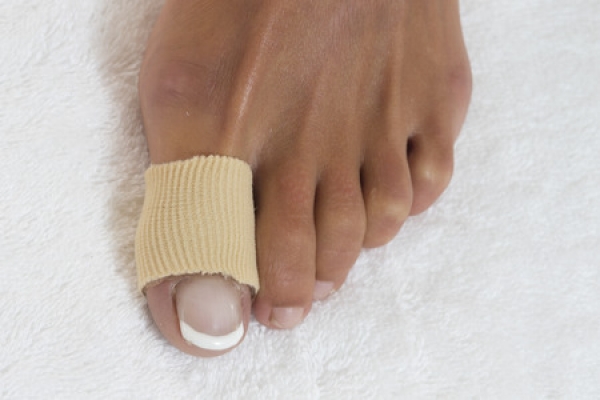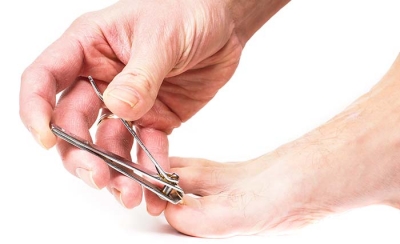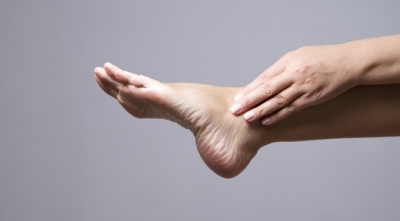Connect With Us
Blogs

Ingrown Toenails (4)
Few podiatric conditions inspire more fear and are more painful than the ingrown toenail. At Superior Foot & Ankle Care Center, we treat many cases of ingrown toenails in our Los Angeles County/Douglas Park area patients. Nearly every patient leaves our Long Beach office in less pain then when they arrived. The information below will help you deal with this common podiatric problem.
Prevention Pointers
Of course, the best scenario is not having an ingrown nail in the first place! Ingrown nails develop when pressure on the edge of the nail drives it into the surrounding skin. The most frequent reason this occurs? Improper nail trimming. Trim your toenails straight across and not so short that the skin overlaps the edge of the nail. Do not curve the edges when you clip or file the toenails. Other sources of ingrown nails include:
- Fungal infections—keep feet clean and don’t allow them to sit in damp socks for extended periods of time
- Footwear choices—avoid styles that have narrow, pointy toes and high heels that force the toes to be crammed together.
- Toe deformities—overlapping toes, hammertoes and other deformities may increase the risk of ingrown toenails.
- The tendency for nails to become ingrown can also be inherited.
Treatment Do’s and Don’ts
The first sign of an ingrown nail will most likely be pain and redness. Big toes are the most susceptible. If you notice a nail appears to be ingrown, you can soak it in warm water and Epsom salts and then try to gently massage the nail out of the skin. Never attempt to cut the ingrown nail out! If this is unsuccessful, make an appointment and come in to see our podiatrists, Dr. Victoria M. Foley or Dr. Constance Ornelas. The foot doctor can numb the toe and remove the nail. Chronic or recurring ingrown nails may require a minor surgery.
Don’t delay seeking treatment. Ingrown toenails that are not care for properly can become infected. Contact us by calling: (562) 420-9800.
It’s hard to believe how much pain such a tiny part of your body—a toenail—can cause, but if you have one that’s ingrown, you know what we’re talking about. The too-tender-to-touch, swollen, red, hot area surrounding your toe can make it difficult to wear shoes or even walk until it’s treated. At Superior Foot & Ankle Care Center we would like to offer the following tips for treating and preventing ingrown toenails:
Don’t: clip your toenails super short or file them with rounded edges—this encourages the nails to grow inward.
Don’t: wear shoes that are too small or narrow in the toe box. Ditto for socks and tights. Any type of footwear that forces the toes up against each other will increase the chances of ingrown nails.
Do: monitor a nail carefully if you’ve had an injury such as a heavy object fall on it, a bad stubbing or if you have another nail condition such as a fungal infection. In these cases, it is not uncommon for an ingrown nail to form.
Do: check your nails frequently if you are a runner, play soccer or participate in another activity where your toe is repeatedly being pounded up against the front of your shoe. This can cause a nail to become ingrown.
Do: soak your foot in warm water and Epsom salts if you notice a nail is ingrown. This may soften the skin enough so that you can gently massage the corner of the nail out of the skin. It may also bring pain relief.
Do: contact our Long Beach office for an appointment if soaking does not work. Our podiatrists, Dr. Victoria Foley or Dr. Constance Omelas will examine the nail and, if necessary, can perform a minor surgical procedure that will remove part of the nail border. Nails that are chronically ingrown may require the nail root to be removed.
Do: call us immediately at (562) 420-9800 if you notice signs of infection: pus, red streaks, fever.
Don’t: try any “bathroom surgery” or folk remedies to treat or prevent ingrown nails. Techniques like putting cotton under the nail, cutting a notch in a nail or repeatedly trimming nail borders as a new nail grows not only don’t work they can result in injury or infection.
Ingrown Toenails: A Common and Unpleasant Pain
Ingrown toenails are a common nail impairment and account for about one in five patients who visit their family physicians with a foot-related problem. Not only is it an unpleasant hindrance, unattended ingrown toenail can escalate into a painful infection.
Causes for Ingrown Toenails
Ingrown toenails chiefly affect the big toenail, but symptoms can also be found on other toes. Ingrown toenails can be attributed to the following factors:
Anatomical Factors:
- Genetic predisposition, such as the natural shape of your toenails and family history
- Excessive sweating
- Diabetes
- Obesity
- Thyroid, cardiac, and renal disorders that may predispose to edema in the lower extremity of the body
Behavioral Factors:
- Improper trimming (cutting toenails at an angle)
- Repetitive trauma (e.g., running, kicking)
- Inadvertent trauma (e.g., stubbing the toe)
- Ill-fitting shoes
- Poor foot hygiene that provides a breeding ground for bacteria and fungi
Symptoms of Ingrown Toenails
At its early stages, the skin next to the nail may become tender, swollen, and harden over time. There will be pain when pressure is applied to the affected area, leading eventually to fluid build-up. When the affected area becomes infected, symptoms will include red, swollen skin; pain; bleeding; oozing pus; and overgrowth of skin around the toe.
Treatments for Ingrown Toenails
For identifying treatment options, it is useful to classify ingrown toenails into three categories according to their severity: mild, moderate, and severe.
Mild Cases:
- Nail-fold swelling
- Redness or rash of the skin
- Pain with pressure
Moderate Cases:
- Increased swelling in the affected area
- Drainage
- Infection
- Ulceration of the nail-fold
Severe Cases:
- Chronic inflammation
- Granulation tissue (bright red growth coming out from the side of the nail)
- Nail-fold hypertrophy
At-Home Treatments
At-home treatments of ingrown toenails are effective in patients with mild to moderate cases of ingrown toenails. They include:
- Soaking the affected toe and foot in warm, soapy water for 10 to 20 minutes, followed by the application of a topical antibiotic ointment such as polymyxin/neomycin (Neosporin) or steroid ointment to the affected area several times a day until the discomfort resolves
- Placing cotton balls soaked with olive oil under the edge of the affected nail. This method was found to provide immediate relief from pain with minimal or no risk of bacterial infection to the site.
- Gutter splinting: a gutter splint can be made with an acrylic artificial nail that is placed under and taped to the affected nail. The gutter splint treatment takes two weeks to three months to complete – the time required for the normal nail to grow.
Surgical Treatment
The most common surgical procedure for treating an ingrown toenails that is not resolved with at-home treatment is through chemical matricectomy, during which the lateral edge of the affected nail is removed. Apart from a narrower appearance after surgery, the nail will grow back to its original width since the nail matrix is not removed during matricectomy,
Post-Surgical Care
Keep the foot of the bandaged toe raised for one to two days and avoid movement and blunt trauma to the operated site. After the bandage is removed on the second day, wear open-toe shoes as much as possible and soak your toe or foot in saltwater daily.
Infection of the affected area generally resolves without the need for antibiotic therapy after surgery; however, if infection of the lateral nail fold is suspected due to an incomplete matricectomy, physicians will prescribe an oral antibiotic that covers common skin-related bacteria growth. Meanwhile, you can manage pain with over-the-counter pain relief medication.
Prevention
- Cut toenails straight across, not at an angle or down the edges
- Wash your feet every day, drying them thoroughly and applying a foot moisturizer onto your feet and toes
- Use a foot file to remove hard or dead skin
- Wear proper-fitting shoes
- Change your socks (or tights) every day to maintain good feet hygiene
Toenails that curve and dig into the skin of your toe are called ingrown toenails. Sometimes even the size of the nail are covered in skin and become embedded in the toe. This is why you should always be sure to cut your toenails straight across to discourage the sides from growing into your skin. Any toe can develop an ingrown toenail however, it is often the big toe.
While ingrown toenails are not often serious medical problems they can be severely painful. And, if left untreated and uncared for properly ingrown toenails can become infected. This is why it is important to receive proper treatment for your ingrown toenails right away.
What causes ingrown toenails?
- Shoes that are too small because they squeeze the toes.
- Toenails being cut too short.
- A toenail that has become damaged or chips can become an ingrown toenail.
- Having toes are too small to accommodate proper nail growth.
People with congenital conditions that cause them to have toenails that are frequently larger or smaller than normal should take care to always trim their nails properly and maintain proper foot hygiene because they are at high risk of developing ingrown toenails.
You may also develop ingrown toenails after sustaining a foot injury, such as a broken foot.
Other ways to keep your feet/toes healthy.
- Keep your feet clean and dry
- Keep your feet safe in public areas where they are susceptible to contracting diseases like athlete’s foot.
- Wear breathable footwear
- Don’t share footwear
- Always wear shoes that fit you properly
- If your toenails are discolored be sure to not apply any nail polish to them. Discoloration is often a sign of infection, and the Polish may make the infection worse.
Treatments
- Soak your feet
- Take over the counter pain medication
- Using a small nail file pulls the skin gently away from the nail
- Rub your toe with antibiotic ointment.
- Bandage your toes
When you develop ingrown toenails it is important to put any and all of these treatments into practice right away before you develop an infection.
If you suspect you have an infection or your ingrown toenails consistently come back, it is best to see a podiatrist as soon as possible. In addition to treating your ingrown toenail and possible infection, the podiatrist can give you a clear idea of what causes ingrown toenails which can help you avoid developing them in the future. If it persists, you may need a small surgical procedure to remove the ingrown sides of your toenail. People with diabetes should always be their podiatrist if they think they have an ingrown toenail as if they can lead to serious health complications.
Now that you know more about the causes and treatment for ingrown toenails be sure to get yours looked at by a foot care professional, especially if you suspect that you have an infection. If you have any further questions about ingrown toenails, don’t hesitate to contact us. To schedule an appointment, visit doctorvikki.com.




